Vaginal Vault Suspension
A vagina that looses its support may come down and out into the open air. The degree of vaginal prolapse may vary from just having the top fall down a few centimeters to ones that completely go inside out. If a woman still has her uterus then this is called a uterovaginal prolapse. If only the uterus falls out and the top of the vagina is still well suspended then it is called a uterine prolapse. Vaginal vault suspension can be done in many ways. Some physicians prefer an abdominal approach to attach the top of the fallen vagina to the sacrum. Some highly skilled surgeons do this laparoscopicaly. The procedure is called a sacralcolpopexy. More often a vaginal approach is performed. The top of the vagina can be sutured to the uterosacral ligaments or to the sacrospinous ligaments. Either approach works well with different complications to consider. A newer procedure called the Posterior IVS (Intravaginal Slingplasty) has been developed in Australia and New Zealand, popularized in Europe, and now approved in the United States. This vaginal approach uses a polypropylene mesh that is attached to the top of the vagina and suspended “tension-free” via two small incisions near the anus and one incision in the vagina. You can view this procedure in my Video Library. The success rates of all methods are approximately the same at 80 – 90%. Vaginal Vault Suspension is done under general, regional, or local anesthesia in the surgery centeror operating room. Vaginal Vault Suspension takes 60 minutes to perform. Most insurance companies cover this procedure. The cash cost of Vaginal Vault Suspension is $6,000. Patient History: This lady was in her mid 50s and suffered extreme pelvic pressure and pain for over three years before seeing a doctor. She was unable to continue with her active work schedule. She suffered from intermittent bouts of extreme pain, inability to urinate, and needed occasional emergency room visits for catheterizations.
Surgery Performed: Vaginal Hysterectomy, Cystocele and Rectocele and Enterocele repair with mesh, vaginal vault suspension via bilateral sacrospinous ligament suspension with mesh, perineorrhapy.
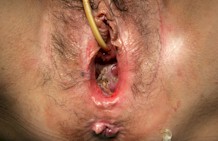 |
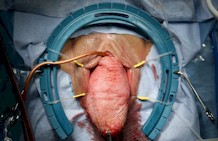 |
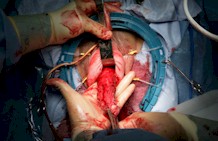 |
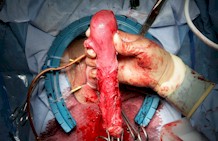 |
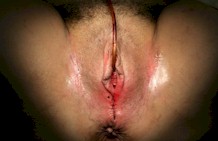 |
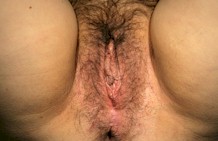 |
Outcome: Full recovery at eight weeks with normal activities and without restrictions.